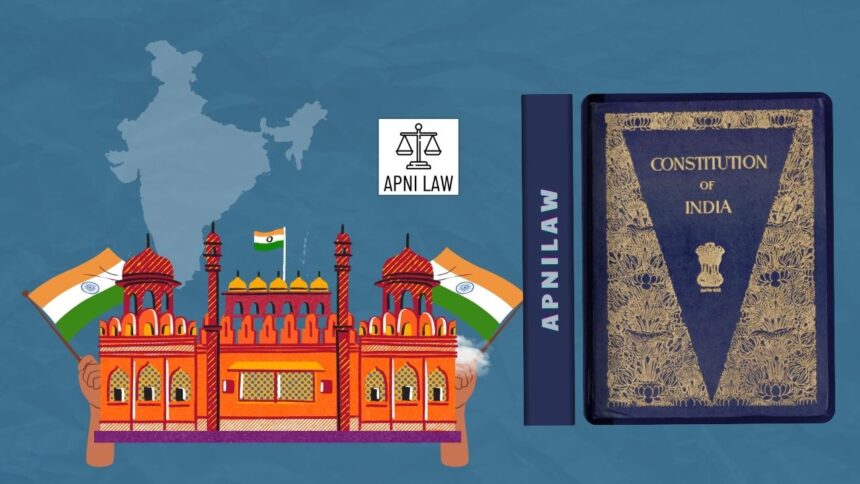What Does the 101st Constitutional Amendment Introduce?
The 101st Amendment introduces the Goods and Services Tax, known as GST, as a unified indirect tax system in India. It replaces many earlier central and state taxes and creates one tax structure for the entire country. This amendment gives both the Union and the States the power to levy GST on goods and services. It also creates a cooperative system where every level of government works together to manage the new tax regime. By doing this, the amendment changes India’s indirect taxation and strengthens the idea of a unified national market.
GST comes as a destination-based tax. This means the tax goes to the state where the goods or services are finally consumed. Earlier, taxes were applied at different stages of production, causing a tax-on-tax effect. The amendment tries to remove such cascading and create a simpler system. The shift to GST aims to make business easier and more transparent. It also aims to reduce compliance burdens and help consumers with fairer pricing.
How Does the Amendment Change Constitutional Powers?
The amendment adds Articles 246A, 269A, and 279A to the Constitution. Article 246A gives both Parliament and State Legislatures the authority to make laws on GST. This is a major shift because earlier, indirect taxes were clearly divided between the Centre and the States. With GST, both now share powers in a concurrent way. Article 269A deals with Integrated GST, which applies to interstate trade and commerce. The revenue from IGST is shared between the Union and the States in a formula decided by law.
Article 279A establishes the GST Council. This Council becomes the main decision-making body for GST. It includes the Union Finance Minister and the finance ministers of all states. The Council recommends tax rates, exemptions, laws, and procedures. It creates a space where states and the Centre negotiate and reach decisions together. This platform reflects cooperative federalism. It ensures that no single authority controls the entire system. Instead, it requires consensus and discussion.
Why Was the GST Council Created?
The GST Council is created to maintain harmony in India’s tax system. Before GST, each state had its own tax structure. Businesses had to handle many rules and taxes. There were disputes on tax rates and forms of taxation. The Council solves these issues by functioning as a constitutional body that gives recommendations for a uniform tax system.
The Council also works as a dispute resolution platform. When states or the Centre have disagreements over tax matters, the Council helps settle them. The Council meets regularly and makes decisions related to tax slabs, exemptions, returns, and compliance. It ensures flexibility because it can make quick decisions when economic conditions change. It also keeps states involved because every state has voting rights. This balances national uniformity with regional autonomy.
How Does the Amendment Affect States’ Revenue?
One of the biggest concerns for states was the possible loss of revenue after shifting to GST. Earlier, states collected taxes like VAT, entry tax, and purchase tax, which formed a major part of their income. GST replaced these taxes, so states needed reassurance. The amendment solves this problem by promising compensation for five years. The Centre guarantees compensation for any revenue losses that states face because of GST. This gives states enough time to adjust to the new system.
Compensation becomes essential during the transition phase. It ensures that states can maintain their spending on welfare, development, and administration. Without this assurance, states might have resisted GST more strongly. By promising compensation, the amendment strengthens trust between the Centre and the states. It also makes the reform smoother and more acceptable across regions.
What Taxes Were Removed by the Amendment?
The amendment removes several indirect taxes that existed before GST. At the central level, taxes like central excise duty, additional customs duties, and service tax get subsumed. At the state level, taxes like VAT, entertainment tax, luxury tax, advertisement tax, and entry tax are removed. Many indirect taxes were merged to form a single GST. This reduces duplication of taxes. It also removes the burden of paying tax upon tax, which earlier increased the final price of goods and services.
Removing these taxes creates a simpler structure. Earlier, each tax had its own system, forms, laws, and compliance rules. Businesses had to interact with many tax departments. GST eliminates this complexity. It streamlines administration and makes the system more efficient. The aim is to encourage economic activity and reduce confusion in taxation.
How Does GST Promote a Unified National Market?
GST unifies India’s market by removing state barriers on trade. Before GST, moving goods across states required multiple permits, checkpoints, and tax payments. This increased transportation time and costs. With GST, there is one tax applied across states. Interstate trade becomes smoother and more efficient. Goods move faster, and businesses can operate across states with fewer hurdles.
A unified market increases competition and reduces expensive logistics. It helps producers reach consumers in any part of the country without worrying about different tax rules. This reform encourages investment and economic growth. It also integrates rural and urban markets. Consumers benefit from better prices and more choices.
How Does the Amendment Strengthen Cooperative Federalism?
The amendment strengthens cooperative federalism by requiring joint decision-making. The GST Council becomes a forum where states and the Centre work together. The Council requires agreement on tax matters that affect every part of the country. It ensures that taxation remains a shared responsibility, not a centralised one.
This shared system promotes dialogue. It requires negotiation and compromise. States get a voice in national tax policies. The Centre gets the benefit of uniformity and cooperation. This balance helps create a smoother implementation of GST. It builds trust between governments at different levels. Cooperative federalism becomes a practical and visible reality through the Council’s functioning.
What Economic Benefits Does GST Aim to Achieve?
GST aims to increase economic efficiency. By removing cascading taxes, it reduces costs of production. Producers can claim input-tax credit for the taxes already paid on inputs. This reduces the final price of goods and services. It increases competitiveness and encourages exports.
GST also improves transparency. Every transaction is recorded on a digital platform. This reduces tax evasion and increases compliance. More people come under the tax net. This strengthens government revenue over time. The system becomes easier for businesses to understand and use. This also enhances the ease of doing business in India.
How Does GST Improve Tax Compliance?
GST uses a technology-driven approach. Returns, payments, and refunds happen online. This reduces human interface and corruption. Businesses can track their invoices and credits easily. The government can monitor large numbers of transactions through digital tools.
A single tax system reduces confusion. Earlier, businesses had to comply with many state and central taxes. GST creates uniformity. This encourages compliance. It also reduces litigation and disputes because the rules are clearer. Overall, GST helps build a stronger and cleaner tax system.
Why Is the 101st Amendment Considered a Landmark Reform?
The amendment is considered a landmark because it transforms India’s fiscal federal structure. It removes outdated and complex tax systems. This would create one market and one tax across the country. It brings states into national tax decision-making. They use technology to modernise taxation. It increases efficiency, transparency, and cooperation.








